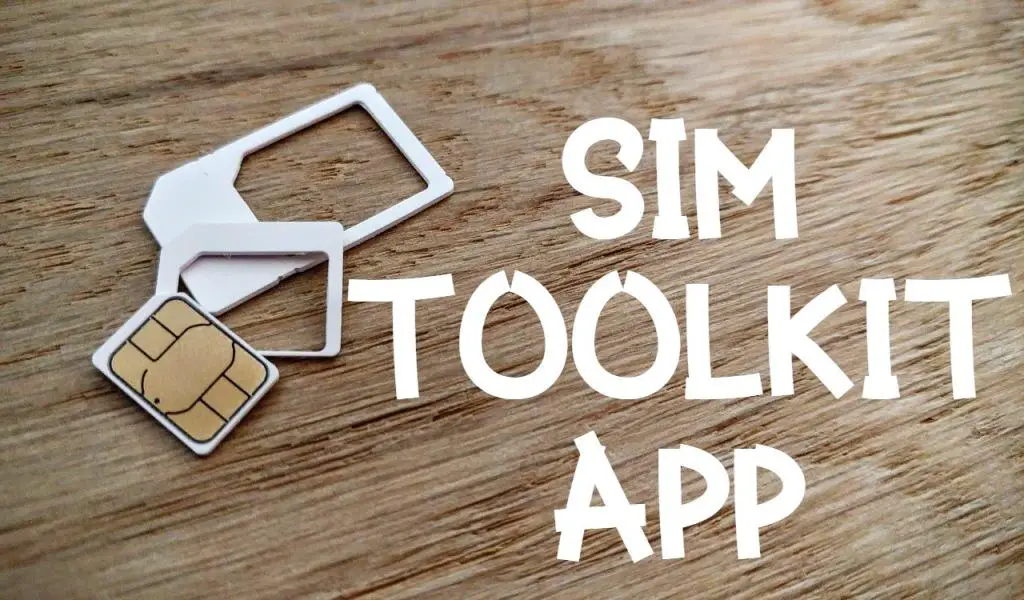In this article, we are going to discuss Silent Logger. Producers and developers of mobile apps are experimenting with various techniques to enhance the user experience. The pre-installed app approach is one of them. Manufacturers and marketers can get more information about their customers using the pre-installed software strategy. They can utilize this information for user-specific or targeted marketing to enhance the user experience. Concerns about using their phones with such preloaded Android software on their mobile devices have grown among many Samsung phone and tablet customers.
One such preloaded application is the silent logger. The SilentLogging software is the subject of many queries. You might be interested in learning more about it, its rights, if you can uninstall it, and what to do if it uses a lot of power and drains your phone. Continue Reading this article to learn the answers to all of these queries.

What does the silent logger application mean?
On a Samsung android device, you may find the Silent Logging app in your collection of system programs. This app effectively collaborates with your device’s modem. Silent Logging establishes a connection to the internet to assist in logging significant data on your device, such as SMS and call records. This is done to back up the data and make it simpler to restore it on a new phone or following a factory reset.
It is an application that comes pre-installed on most smartphones, notably Samsung models. The silent logger software is packaged under the com.sec.modem.settings, indicating that it has something to do with modem settings. The majority of devices that support VoLTE have this. It is an application that comes pre-installed on most smartphones, namely Samsung models. The quiet logging software is packaged under the com.sec.modem.settings, indicating that it has something to do with modem settings. The majority of devices that support VoLTE have this.
What is silent Logging used for?
Silent Logger has been installed in the device to back up all calls and SMS you send and receive, suggesting quietly connecting to the internet. Backing up your data is crucial, especially if you plan to purchase a new Android device and want to keep your current data on it. The Silent Logger app truly comes into its own at that point. Your device’s kernel is essential to run these backups. It refers to the computer code kept in a secure location on the machine to guard against other programs.
Additionally, it communicates with the device’s kernel. A component of your smartphone’s application system, the kernel is in charge of low-level handling tasks. Your data files, device capacity, and networking are all managed here.
Which permissions are required for silent Logging?
All of the Silent Logger Android app’s necessary permissions align with the program’s intended use if you check them all. You will be granting the quiet logging app the following permissions:
- Contacts: Before using this app, you must let it record all your contacts.
- Call History: A crucial fact of information on your smartphone is the call logs, which silent Logging will capture.
- Permission for Message: When you permit messages, the app can read every message, alter it, and send it on your behalf.
- Camera: The app for silent logger will have accessibility to your camera and store your photos and videos.
Is the Silent Logging App secure?
Silent Logging is not very harmful software. The app’s information is scarce, and the software is noted for consuming a lot of battery and data. Additionally, more permission is needed. Since even a microphone and camera need permission. We assume that turning off the app is preferable. Like many other system apps, Silent Logging won’t reveal any of your personal information to outside parties.
What about the battery drain caused by the SilentLogger app?
The SilentLogging app’s high battery usage is one factor that turns off many users. The display and Android operating system apps use the most power. However, the Silent Logging app comes in second. This is because the software needs to acquire the required data while running in the background.
In addition, the app uses up the RAM and Processor of the Android device, both of which power and deplete the smartphone’s energy. People often force-stop the program and clean the cache and data on their Android devices to combat the quick battery drain. However, this solution only works briefly, and the app quickly resumes, and battery usage returns to normal.
How Can Android Users Fix the Silent Logger App?
If you are unfamiliar with Android Debug Bridge (ADB) commands, Silent Logging can be challenging to remove. Before we do that, let me give you several alternatives to removing this system app.
Force stop the application.
Some users may be forced to stop the app. To resolve the power dissipation issue with the app or any other app, force shut down the Silent Logging android app. Although it won’t last forever, you must understand this. Follow our step-by-step instructions below to force-quit the Android app Silent Logging;
- Go to the menu and choose “Settings.”
- Select “Applications” from the list of alternatives, then open Silent Logger on Android.
- The top three-dot ellipsis must be clicked.
- Pick Force Stop from the two possibilities.
- Temporarily there will be lower battery consumption.
Remove App Cache
I advise emptying the cache first if you notice that this official software uses a lot of battery life on your Android device. Taking this easy action will often solve the problem without the need for further fiddling with the system software.
- Select “Settings.”
- Choose “Apps.”
- To access more options, tap the menu button in the upper corner.
- Choose “Show System Apps.”
- Look in the list for “SilentLogging.”
- Select “Storage.”
- Click “Clear Cache.”
How to disable the silent logger application?
Via settings
The other choice after completely removing the app is disabling it. If you run across any issues after doing that, you may activate the program again because it is easily reversible.
- Launch the settings application.
- Select “Apps.”
- You may open the menu by pressing the three dots in the upper area of the screen.
- Select “Show system apps” from the menu.
- Look through the list for Silent Logging and choose it.
- Click “Disable.”
When you want to activate the apps once more, repeat the process but press “Enable” instead of “Restart.”
Using Titanium backup
Sometimes, a person may find that the two selections are insufficient for him, and he may want to delete the software. With this, there is good news. It is possible to disable a built-in pre-installed app. Therefore, a Titanium backup is required if you want to stop SilentLogging.
- To prepare for this, you must perform an action called Android rooting on the smartphone. Launch the Titanium backup app after downloading it from the Playstore.
- Enter com.sec.modem.settings or Silent Logging app in the app’s search bar. If you choose “Freeze,” the application will freeze or become inoperable.
- Using Titanium Backup to disable the program, all background processes associated with it are terminated, which resolves any problems.
- It would help if you chose the ‘Provide‘ option to grant the Superuser program, which is present in some Samsung apps, permission to disable SilentLogging with Titanium backup.
Can I uninstall the silent logging app from my phone?
It’s common to believe that built-in software cannot be removed; however, that is untrue. The software cannot, however, be uninstalled as other third-party apps may.
But how can you remove the silent logging app from your phone? Well, you can complete the task with the aid of an Android debug bridge or a system app remover software (ADB). You can experience system flaws after uninstalling the application, such as lost calls, messages, or modem problems.
Uninstalling using ADB
These next steps could be challenging if you’re not accustomed to utilizing ADB for cellphone devices and data interfaces. If you’re unsure of what you’re doing, you are taking the chance of damaging the software on your device. Proceed at your own risk.
Enabling USB Debugging on the phone is the first action to be taken.
- Open “Settings.”
- Choose “About Phone.” According to your Android device, this can be under a different menu called “System.”
- Search for the “Build Number” entry.
- Once a prompt stating “Congratulations, you are now a developer!” appears, repeatedly tap on it.
- Select “Developer Options” in Settings.
- In the list, scroll until you see “USB Debugging.” Could you switch it on?
We can now proceed to remove the application since this has been enabled. Only root access or those using ADB from a computer can remove Android system files. To remove this built-in app, we shall employ the latter.
- You must first download and set up ADB on your PC. You may purchase it right here.
- Right-click the ZIP file after downloading it to begin extracting it.
- Activate the folder where you extracted it.
- Any empty area in this folder can be selected by right-clicking while holding down Shift.
- Choosing “Open command window here” will do.
- The Powershell window will open as a result.
- Connect your Android phone to the PC.
- When you type “ADB devices,” hit Enter.
- Accept the request to grant computer access from your smartphone.
- Now, input “ADB devices” again. You’ve done well thus far if you see a group of characters with the word “device” next to them.
- Enter “adb shell pm uninstall -user 0 com.sec.modem.settings” without the quotations.
- You can check to see if the app is still available on Android by searching for it after the command has finished running.
Uninstalling Using Android App Remover
Using Android App Remover, it is simple to resolve problems with the SilentLogging app. Rooting your device is the only requirement. Consult the Rooting section of the manufacturer’s instructions if unsure how to proceed. Once finished, take the steps below to remove the Silent Log app from your Android device;
- Download the System App Remover app from Playstore by going there.
- To download the SilentLogging app, open it and utilize the search bar.
- Click check in the resulting checkbox.
- When you choose “Uninstall,” the app will be removed from your device, and all of its data will be deleted.
Conclusion
A built-in, pre-installed app called SilentLogger in Android enables the phone to track SMS and calls and back them up. It is safe and legitimate, even though some might find it dubious. The only drawback is that it drains the battery. There are numerous fixes for the app described in the article and the methods to remove this application from your device permanently. You can remove this application software if you are familiar with terminals and ADB commands. But before you do that, you might discover that halting it abruptly or by force is sufficient. Did this article provide you with any additional information regarding the SilentLogging app? Browse our related articles to discover more helpful articles like this one.
FAQs
For user-installed apps, force stop is a better choice if you need to close it quickly or if there are problems. Disabling such active apps is not advised. Bloatware (pre-installed apps) can be disabled, but system apps—necessary to maintain your device functioning properly—should not be.
It can. To record all the data, you won’t execute the application. They can all be saved while it runs in the background.
When you periodically clean the caches, it does help. Some silent logging problems can even be resolved by resetting your device.
If uninstalling them is unavailable, you can free up storage space by disabling them. Press the app icon to open a pop-up window, and select Disable.
My self Jean Acker, an SEO specialist. MS from the reputed college MIT. I am an innovative person, as well as have a sound interface with tech. Honestly, I easily supervise my meditations as well as my experimentation with Android and iOS.

